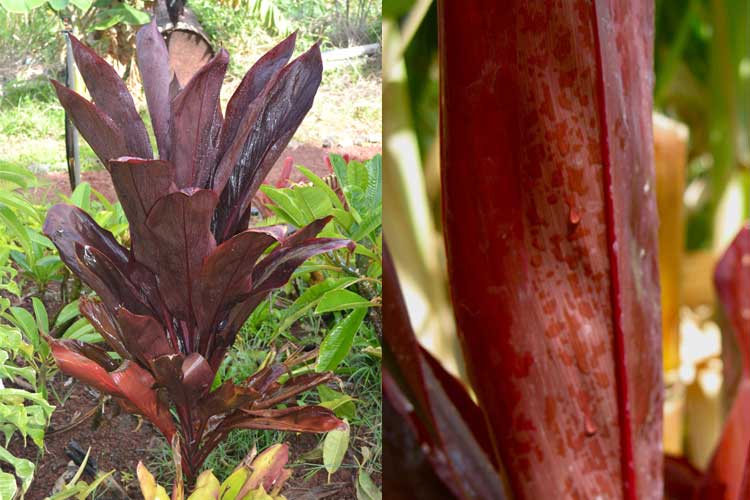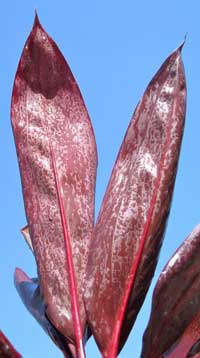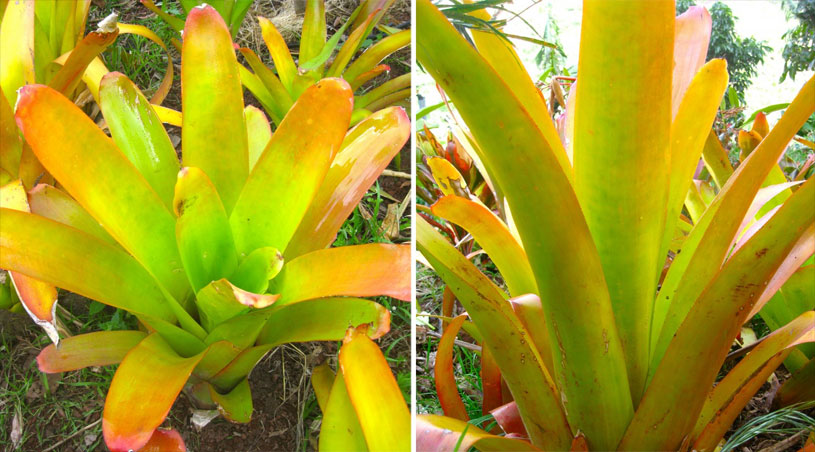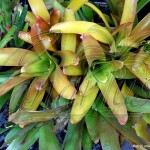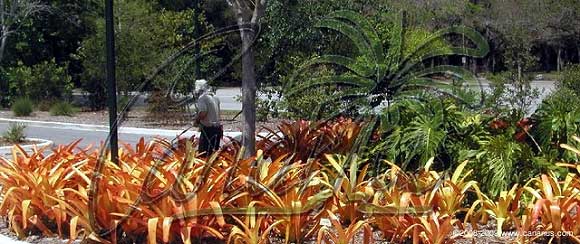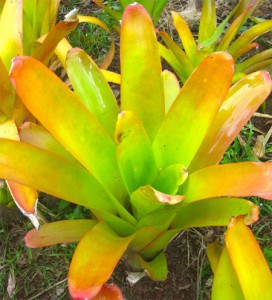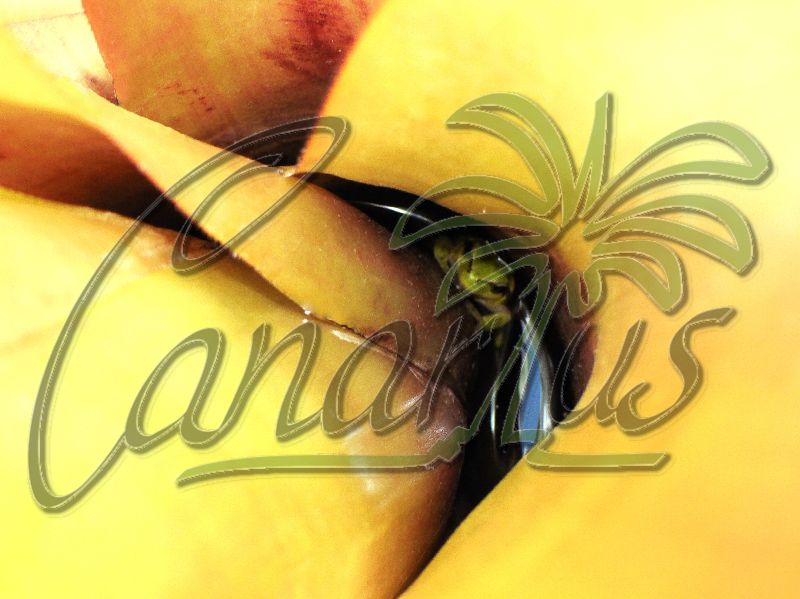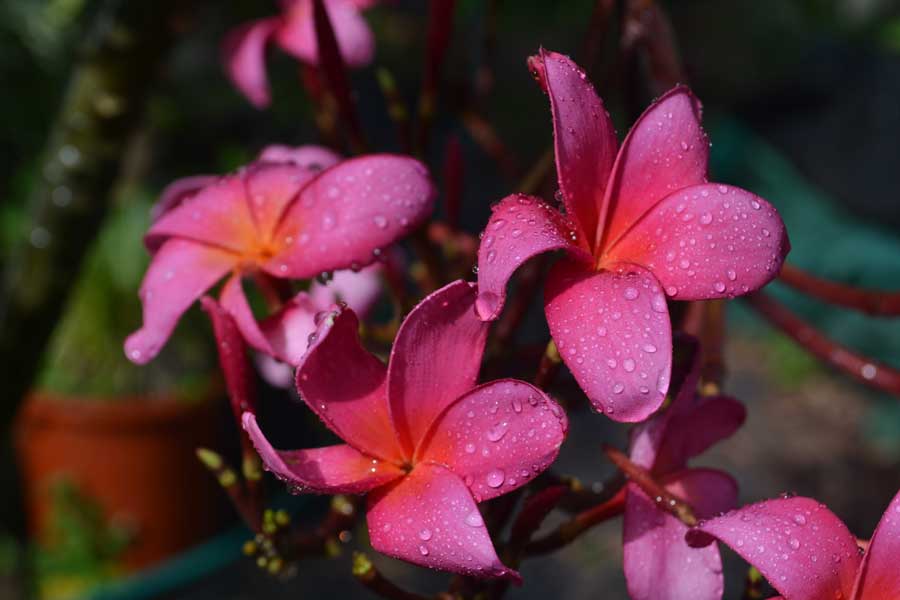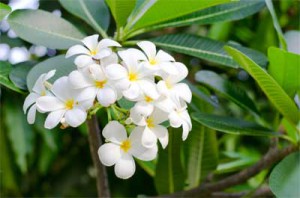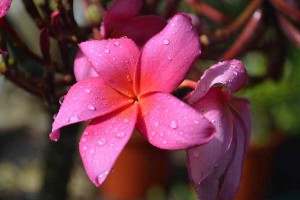The genus Cordyline, belongs to the botanical family Asparagaceae, and it is native to Polynesia, New Zealand, Australia and S.E. Asia; also one species comes from South America.
In this case, we talk about the uncommon Cordyline fruticosa ‘Lyon’s Black’. This dark-leaved selection bears large sized, almost black leaves, with blueish wax. The whole plant is very erect and robust, 2 to 4,5 m tall. ‘Lyon’ s Black’ is one of the boldest cultivars. It was selected at Lyon Arboretum, in Honolulu, Hawaii. It typically blooms in Winter, with attractive sprays of pink-mauve flowers.
Its extremely dark foliage is a must in tropical gardens because it creates an incredible contrast with green backgrounds. The best colour is achieved in full sun.
As most large-sized Hawaiian cordylines, ‘Lyon’ s Black’ grows thick roots underground and is more resistant to wind, drought and cold than the smallest cultivars often sold in garden centres for indoor decoration. If its height is too much, it can be chopped in Spring at the desired height and it will soon sprout back from the cut stems.
About the exotic Cordylines
Cordyline fruticosa is a marvelous foliage plant originating in the Pacific Islands. It adaptable to bright shade can grow indoors as a house plant. The wild type has green glossy leaves that are used throughout Polynesia to make food-wraps or the famous hula skirts. Many colourful cultivars have been selected for ornamental purposes.
Our Hawaiian selections will also be perfect in the tropical or subtropical garden. They can take cool temperatures but will be damaged or killed by frost. These “outdoor cultivars” bear leathery leaves and grow thick tuberous roots underground. They can even stand the cold winters of the coastal Mediterranean, especially if sheltered from the wind.
If you grow plants in full sun, you will obtain larger, robust specimens with thicker leaves. These plants will be much hardier to drought, wind and cold than plants grown in the shade.
After a few years, pot-grown Cordylines can start to become tall and leggy. If so, they can be kept low by pruning or air layering the shoots that become too tall. They will sprout new shoots from the base or from the cut.
The plant that we offer at Canarius is 20-40 cm tall and it is about 1 year old from cutting. It is grown in a pot of about 12-14 cm. Would you like to try a Cordyline fruticosa “Lyon’s Black”? Get it right now from us!
















